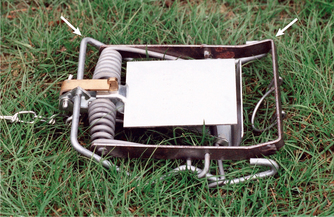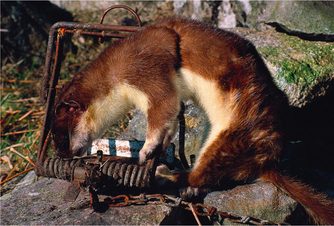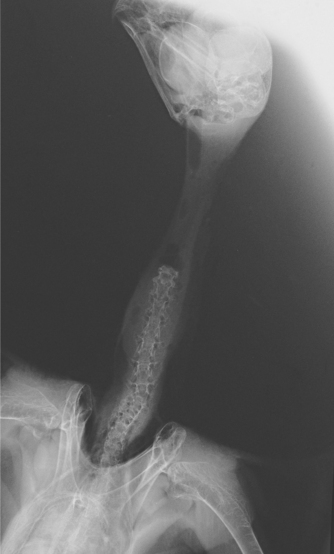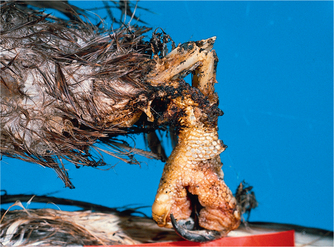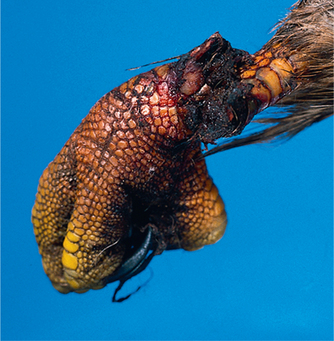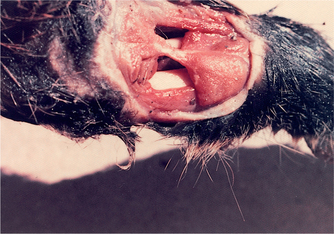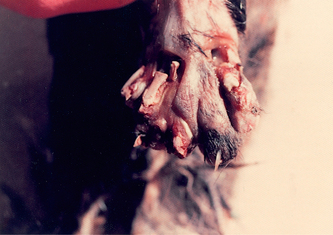11 Traps and Snares
Spring traps
Spring traps have spring-loaded jaws that are released when pressure is applied to a trigger or plate in the centre of the trap (Fig. 11.1). Some of these traps, known as ‘body grip’ traps and ‘humane spring traps’, are designed to kill by closing on the body of small creatures such as rats, squirrels, stoats, weasels, mink and rabbits (Fig. 11.2).
Use of spring traps for birds of prey
Body-grip spring traps designed for use on small animals may be misused to capture birds of prey. Baited traps are set in the open, in contravention of the regulations, and birds of prey trigger the trap by alighting on the trigger plate. The jaws close on the leg or legs of the bird, trapping, but not killing, the bird. Unable to extricate itself from the trap, the bird eventually dies from shock related to the severity of the leg injuries, dehydration and exhaustion. Any live bird in the trap may ultimately be killed by a blow from a stick or by dislocation of the neck (Fig. 11.3). It is, therefore, good practice to subject any ‘found dead’ bird of prey to a thorough post-mortem examination to determine the cause of death.
Leg lesions in birds caught in spring traps consist of abrasion and tearing of the skin, haemorrhage and fracture (frequently compound) of the tibiotarsal bone (Fig. 11.4). Some birds alight with one leg more extended than the other (e.g. buzzards). Those birds can suffer similar injuries to both legs but the lesions in the more extended leg are higher on that leg than those in the partially flexed leg.
In an attempt to mask or hide evidence that might indicate the bird has been caught in a spring trap, the jaws of the trap may be padded to lessen obvious injury to the legs. However, these padded jaws still exert considerable pressure and fracture of the tibiotarsal bone may occur. Additionally, the foot of the trapped leg may become considerably swollen and discoloured if the bird remains in the trap from some hours (Fig. 11.5).
Leg- and foot-hold traps
Considerable efforts have been directed towards studying1–6 and improving trap design to minimise injury, and some countries and states have taken steps to ban the use of the most injurious and cruel traps.
Soft tissue lesions include oedema (with or without haemorrhage) and laceration of skin and muscle (Fig. 11.6). Muscle injury may be accompanied by damage to tendons and ligaments or dislocation of elbow, hock and toe joints. Over-exertion, caused by attempts to escape from a protracted period of entrapment, can lead to degenerative changes in the muscles (exertional rhabdomyolysis).
Radiography is an essential part of the examination of animals when there is suspicion of trapping. Fractures may be found in the toes and foot or the long bones further up the limb. These fractures may be simple or compound (Fig. 11.7). Padded traps cause significantly less injury to the target species than steel-jawed traps, but may still result in serious injuries (e.g. limb fractures) to smaller non-target species.
Stay updated, free articles. Join our Telegram channel

Full access? Get Clinical Tree


